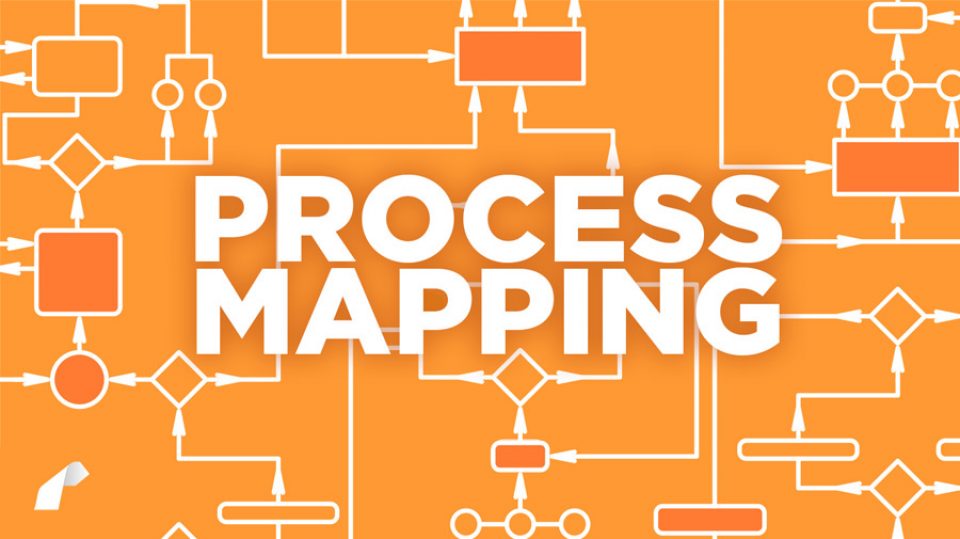The IMEC Advanced Manufacturing Technologies Services (AMTS) service is the strategic incorporation of nine (9) core Industry 4.0 technologies along with all the enterprise’s other continuous improvement initiatives. Looking at AMTS, we see the confluence of several process mapping tools come to bear, ensuring that the enterprise has a unified, well-coordinated and well-integrated improvement system for achieving their strategic and operational goals / targets.

So, let’s uncover these process mapping tools to see how and when they can be most effective in coming together to support an enterprise achieving their strategic and operational goals / targets.
The process mapping tools I will be discussing here are VSM (Value Stream Mapping), SIPOC (supplier, input, process, output, customer) process mapping, PF (process flow) mapping and DF (data flow) diagraming. Each has their place in the framework of an AMTS solution and aligned with the enterprise achieving their strategic and operational goals / targets (did you notice this is the third time this reference has been made?). For all practical purposes, let’s define the VSM as a 20,000 foot view process map, with SIPOC being a 10,000 foot view process map, PF a 5,000 foot view process map and DF diagraming the informational technology (IT) / operational technology (OT) shield under which the other three process maps exist and operate.
VSM – Value Stream Mapping is used for “improvement implementation planning” (say that 10-times fast). A value stream is a series of value adding and non-value adding actions (processes) required to deliver a family of products / services to a customer; and value stream mapping is material and information flow mapping for a particular value stream. So why do we value stream map? For a few different reasons:
We don’t know where to begin to improve;Helps us see the sources of waste in a value stream;
Allows us to see not only the waste and where flow is broken, but how the information flow supports / impacts the system;
Provides a common language for communicating improvement opportunities in a value stream;
Shows the inter-relationship in a system of processes;
Brings together all the solutions to bear – creating a unified and strategic roadmap to solving a problem / meeting an objective;
Allows us to plan for an ideal future state – breakthroughs not the status quo.
All this with the main objective of linking processes in a value stream to smoothly flow the material / service, at the pull of the customer, in the shortest lead time possible, with the highest quality and at the lowest possible cost.
SIPOC - The enterprise’s current processes that are either suppliers to or customers of the value stream are central to the success of the improvement initiative. As the value stream is an integrated system of supplier and customer processes (both internal and external), and as any change to the value stream is made, that change may in fact impact all these collaborative processes; thus, it is important to map these processes inter-relationships utilizing SIPOC (suppliers, inputs, process, outputs and customers) process mapping.
PF – Process Flow Mapping is a deeper dive yet, getting down to the individual process level of a value stream. Here we are mapping discrete steps in the process and any decisions that need to be made – determining the path (process flow) the process will take. Process flow mapping is a good tool to use when an improvement opportunity is identified within an individual process while value stream mapping; and when the resulting action on the roadmap is to look deeper into the process for understanding and where specifically the process can be improved – waste elimination opportunities, add / remove process steps, add / remove decision points, modify the process flow, combine processes, etc.
DF – Data Flow diagraming is a process mapping practice of diagraming your IT/ OT system architecture where sensitive, confidential, intellectual property enters the architecture, how and where it flows, and where it resides. Data Flow diagraming is a crucial component to understanding your current cybersecurity attack surface and how to plan for strengthening your cybersecurity posture. So how does this relate to the previous three process mapping tools? As I mentioned above, DF is the shield under which the other three process maps exist and operate from a cybersecurity perspective, but also illustrates the degree of system integration which exists. The value stream shows the information flow into and out of processes, and to where and ideally annotated for what purpose. DF takes it to a more detailed level (system architecture level) to illustrate where vulnerabilities may exist and where vertical and horizonal system integration can help the organization meet their strategic and day-to-day tactical objectives. Vertical Systems Integration here refers to the extent of formal connections and linkages between and across processes and systems, and it also takes into account how data is exchanged and analyzed - the integration of processes and systems across all hierarchical levels of the automation pyramid (within a facility) to establish a connected, end-to-end data thread Horizonal Systems Integration here refers to the integration of enterprise processes across the organization and with other stakeholders along the value chain – where enterprise processes include demand planning, procurement, logistics, and after-market services, while stakeholders include suppliers, business partners, and customers.
In summary, utilize each of the process mapping tools to uncover opportunities for improvement – practicing each to gain familiarity with and improving how these tools can be leveraged to achieve your organization’s strategic and operational goals / targets. Be patient, as sometimes you may have to fail in order to improve; and if needed, ask for help. IMEC is here to help you plan, implement, and excel. Get in touch with an expert today!




